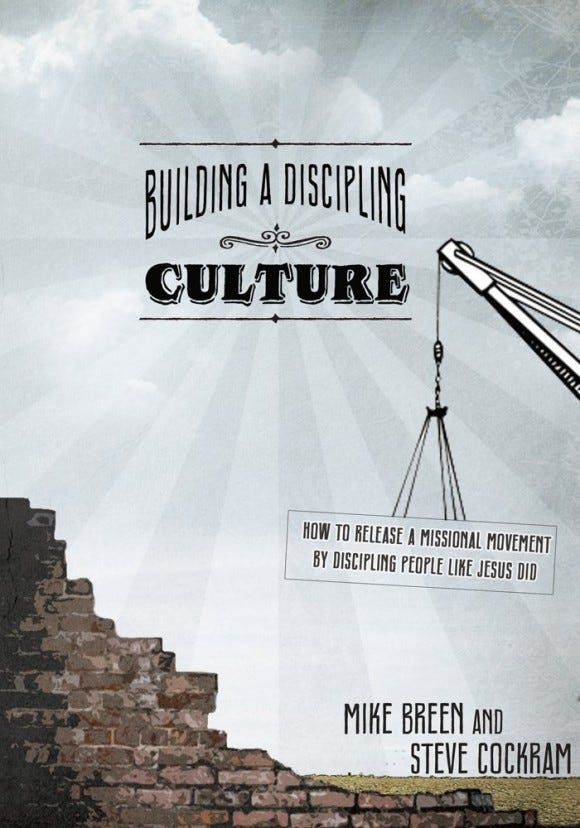Mike Breen’s <i>Building a Discipling Culture</i>: Introduction to the LifeShapes (Chapter 5 cont.)

I am reviewing Mike Breen and Steve Cockram's book, Building a Discipleship Culture. Breen's approach to disciple-making and ministry is appealing. So I wanted to blog through the book chapter by chapter.
Introduction
At the end of Chapter 5, Mike Breen introduces the LifeShapes and explains why he uses them. Until now, the discussion in this books has been somewhat theoretical. Breen has explained his understanding of how we should approach making disciples.
But he hasn’t really told us anything about how we can practically disciple others. The LifeShapes are the core of his program. Breen doesn’t suggest a curriculum for discipling others like you would find in Greg Ogden’s Discipleship Essentials or other similar books. He instead uses a series of shapes to teach certain Christian teachings that are used in Huddles (the informal meeting between a person and the people they are discipling.)
Why Shapes?
When I first read about the LifeShapes, I thought this was another weird, cheesy, pop-Christian fad. I thought, There’s no way that I will ever use this! I find it strange, and everyone else I talk to will find it strange. I probably overreacted, but remember that I work in college ministry. College students are cynical and quick to dismiss some things, and I was worried that this would be one of them.
But the LifeShapes eventually won be over. The shapes are helpful mnemonics. The three aspects of our relationships (Up, In, and Out) are taught through a triangle. The fivefold gifts of ministry are tied to a pentagon. The four stages of discipling others are connected with a square.
The fact that shapes are use makes it easy to remember, especially in our visual culture. Breen says:
“In the past hundred years, however, we have entered into an image-based culture, and we store large amounts of information, stories and data by attaching them to images. Our brains are literally wired differently than they were a hundred years ago. Our memories are stored and encoded in ways that they weren’t in either the oral or written cultures. (How’s that for world history in three paragraphs or less?)
“Because of this, the idea of attaching the teachings of Jesus and Scripture to a few basic images is perfectly in line with how our brains are already hardwired.”(Kindle Locations 692-696).
The Goal of LifeShapes
The LifeShapes just serve as helpful explanations of teachings. They are not the complete teaching on a subject. For example, Jesus’ teaching on prayer in what is traditionally known as the Lord’s Prayer is explained using a hexagon. The hexagon is easy to teach and to explain; you could probably do so in less than five minutes. But there are endless elaborations and teachings for which you can use this LifeShape as a launchpad.
But the LifeShapes help simply explain some teachings of the Bible so that the focus can be on living out those teachings rather than becoming plumbing the doctrinal depths of that teaching. (Digging deeper into doctrine has it’s place, but we cannot lose focus on the need to help others live out the teachings of Jesus rather than understand them at increasingly deep levels.) Breen says:
“Each shape serves as a kind of portal or rabbit hole, with an endless number of Scripture passages, stories or practices attached. Let’s be clear: The biggest question about someone isn’t whether he or she could teach for five hours on a silly shape. The question is, does his or her life actually embody and incarnate the shape and Scripture teaching, and can this person multiply that into someone else’s life? That was Jesus’ criterion and so it is ours as well.” (Kindle Locations 741-744)
For this reason, LifeShapes should not form the basis of a teaching or sermon series. They should be discussed and lived out in the context of a discipling relationship.
Conclusion
The majority of the remaining blog posts will be explaining each individual LifeShape. If you have never been exposed to Breen's LifeShapes, then I'm sure that you are probably confused about what LifeShapes are. You can google "LifeShapes" or go to the 3DM Ministries website to find more about them.
Next time we will begin with the first LifeShape, and this first one is foundational to all the rest.


